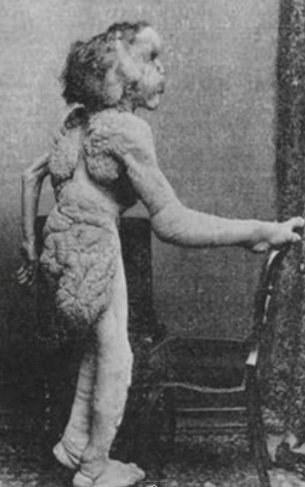What is Proteus Syndrome?
It is a disease that results in abnormal growth of the skin, the bones and the head, along with several other accompanying symptoms. Michael Cohen Jr., DMD, PhD., was the first one to identify the condition in 1979.
The condition got its name from Hans-Rudolf Wiedemann, a German pediatrician in the year 1983. Proteus was a Greek god who was polymorphous and hence the condition was named thus, due to the various manifestations of the condition.
Proteus syndrome is a rare and complex condition that involves a number of body systems and varies from one affected person to another. Currently, there are less than 100 cases of confirmed Proteus syndrome in the world.
The disorder features a number of subcutaneous and cutaneous lesions that include vascular irregularities, hyper-pigmentation, lipomas and various forms of nevi. The diagnosis of the disorder may get delayed as cutaneous lesions tend to occur over a period of time and hence doctors may detect the condition in childhood, adolescence or even adulthood. The limbs and digits may be prone to overgrowth that can result in partial gigantism. The soles of the feet may be unusually thickened.
Most of the medical challenges arise from the orthopedic complications of the condition. However, vascular complications can also pose problems while treating the disorder. Additionally, social psychological problems due to physical deformities also need to be looked into.
Symptoms of Proteus syndrome
Some of the signs and symptoms of Proteus syndrome are discussed below:
- Asymmetrical overdevelopment of the digits, face and head in addition to overgrowth of the soft tissues are some of the most characteristic symptoms of Proteus syndrome. Around 17 percent of the patients may have lesions at the time of birth
- The face may elicit several malformations such as irregular overgrowth of the lower jaw, dental abnormalities, etc.
- The subcutaneous fat may be diminished or absent in the limbs or the trunk. This may give a very slender and thin appearance to the patients of Proteus syndrome and is easily recognizable
- Bone and soft tissue overgrowth may decrease after attainment of puberty
- Around 40 percent of the affected individuals may experience ocular irregularities. They may include misalignment of the eyes, presence of eye-cysts, etc.
- Around 10 percent of the Proteus syndrome patients may sometimes experience bladder or kidney conditions, wherein the kidneys may elicit inflammation or swelling; the bladder or kidneys may be asymmetrical; renal cysts may be present and nephrogenic diabetes may also be caused
- Abnormalities in the curvature of the spine such as scoliosis may be progressive and severe in form. This can sometimes result in respiratory problems. Hypertrophy of the leg muscle, abnormal elongation of the trunk and the neck, and wasting of the upper regions of the body are some other symptoms that accompany spinal disorders
- Subcutaneous and cutaneous lesions can lead to various cosmetic and functional difficulties. Lipomas, vascular malformations and other forms of benign growths can increase the levels of morbidity associated with Proteus syndrome
- Patients affected by severe forms of skin abnormalities have a greater risk to developing extreme malformations of other tissues.
- A small percentage of the individuals affected by Proteus syndrome may also experience learning disabilities and even mental retardation.
Causes
Since Proteus syndrome occurs in very few people, the exact cause of the condition was not known until recently, and used to be a cause of extreme grief for the medical community.
It is essential to note the fact that no activity of either of the parents prior to pregnancy or during pregnancy causes Proteus syndrome. Also, it is not caused due to some environmental factor or due to exposure to certain chemicals before or during pregnancy.
When a gene known as AKT1 undergoes mutation or mosaic alteration, then it results in the condition known as Proteus syndrome. Mosaic alteration of a gene is different from a mutated gene. The body is composed of millions of cells and each of these cells have a genetic code embedded in them, that instructs the cells on how to carry out the various functions. When mosaic alteration of these cells occurs, then it results in changes in the genetic code in only some of the cells of a particular tissue, while other cells remain change-free. This is what causes the characteristic symptoms of overgrowth associated with Proteus syndrome.
The AKT1 gene plays an important role in the manufacture of a special protein that is responsible for growth of cells. Interaction of this protein with other proteins is responsible for decisions that lead to division and growth of cells, or their death. Mosaic alteration of the AKT1 gene causes the protein to decide on abnormal growth of cells, which is what cause the overgrowth in Proteus syndrome patients.
Treatment of Proteus Syndrome
The treatment of Proteus syndrome is aimed at correcting the abnormalities associated with the disorder and alleviating the symptoms. It includes:
- Correction of dental malformations by dental surgery
- Correction of bone malformations via orthopedic surgeries
- Correction of learning disabilities and other psychological disorders via psychotherapy and other therapies
- The use of drugs to alleviate minor symptoms of the condition
- Laser surgery to correct skin abnormalities, lesions, etc.
Proteus Syndrome pictures




